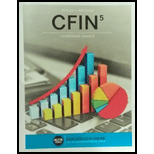
Marginal Cost of Capital (MCC) is the weighted average cost of capital for the last dollar raised in new capital. MCC of the company remains constant for some time after which it increases. This depends on the amount of additional capital raised and eventually increases as the cost of raising new capital is higher due to flotation cost. This is mostly evident in case of
Marginal cost of capital is calculated as below:
Proportion of debt in the target capital structure “
Proportion of
Proportion of common equity in the target capital structure “
After tax cost of debt, preferred stock, retained earnings and new equity is “
Breakpoint is the value of the new capital that can be raised just before an increase in the firm’s weighted average cost of capital.
Investment Opportunity Schedule (IOS) is then created to show how much money a company can invest in at different rates of return (IRR), this schedule is then merged with MCC schedule. The cost of capital at the intersection of both the schedules is the optimal cost of capital, which is used to find out the right mix of financing and therefore, the investment will be optimal. Hence, Optimal Capital Budget is that level of capital at which the marginal cost of capital is equal to the marginal revenues.
The company is evaluating a project to increase its sales. The cost of the project is $2.6 million with an IRR of 9.50%. Any portion of the project can be purchased. The company expects to raise up to $420,000 in new debt at a cost of 5% and anything above this at a cost of 7%. Similarly, it expects retained earnings of $1.3 million this year, with cost of retained earnings beingn12% and cost of any new common equity being 14%. Target capital structure is 35% debt and 65% equity. Marginal tax rate is 40%.
Want to see the full answer?
Check out a sample textbook solution
- What are types of finance?arrow_forwardWhat are the 4 areas of finance?arrow_forwardQuestion 1 Determine the price of a zero-coupon bond that has a par value of $8000 with a maturity date in 10 years that is priced to yield 5% compounded yearly. Question 2 A bond has a face value of $10,000 and matures in 10 years. The coupon rate is 3% compounded quarterly. a) What is the amount of the dividend each quarter? b) What is the price of the bond to yield a true interest rate of 2.5% compounded quarterly? c) How much will you make if you invest in this bond? Question 5 You want to have $50,000 in 5 years. A. How much must you deposit each QUARTER in an account paying 10% compounded quarterly to reach this goal in 5 years? Round to the nearest cent. B. How much is your total contribution? Round to the nearest cent. C. How much interest did you earn for this investment? Round to the nearest cent. Question 3 The amortization schedule below is based on a $150,000, 30-year mortgage, financed at 6.01%. It has partially filled in for you. Payment…arrow_forward
 EBK CONTEMPORARY FINANCIAL MANAGEMENTFinanceISBN:9781337514835Author:MOYERPublisher:CENGAGE LEARNING - CONSIGNMENT
EBK CONTEMPORARY FINANCIAL MANAGEMENTFinanceISBN:9781337514835Author:MOYERPublisher:CENGAGE LEARNING - CONSIGNMENT
